Bài giảng Phương pháp kiểm tra và đánh giá học tập - Chapter 3: Objective testing
I. Subjective & Objective testing
II. Objective tests
III. General principles of multiple choice items
IV. Important guidelines of multiple choice items
V. Components of multiple choice itemsI. Subjective & Objective testing
Subjective & Objective terms the scoring
methods
All tests subjectively constructed by the
test writer
Objective tests: only one correct answer.
+ scored mechanically by computer
+ responsible for testing a large number
of candidates
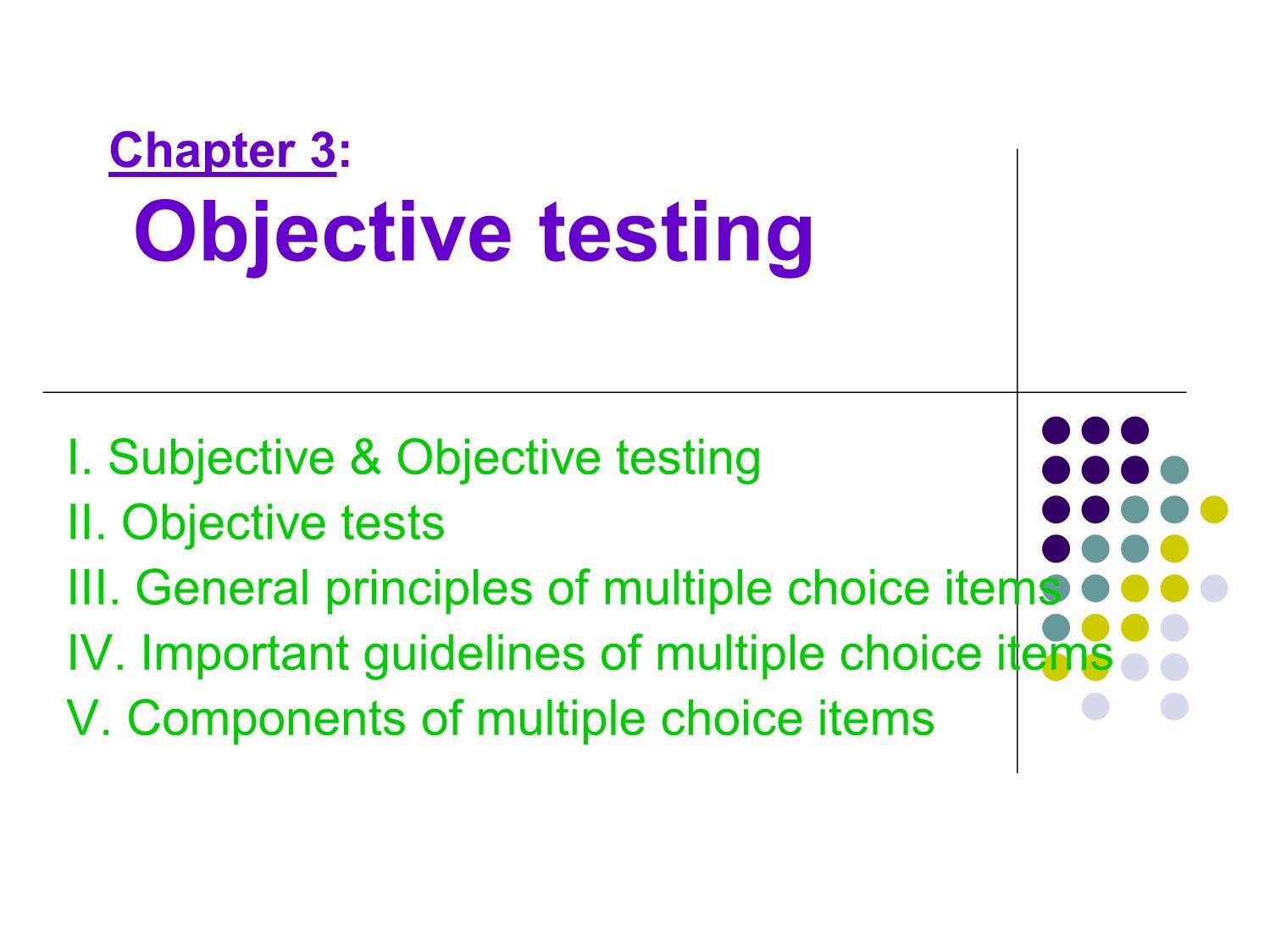
Trang 1
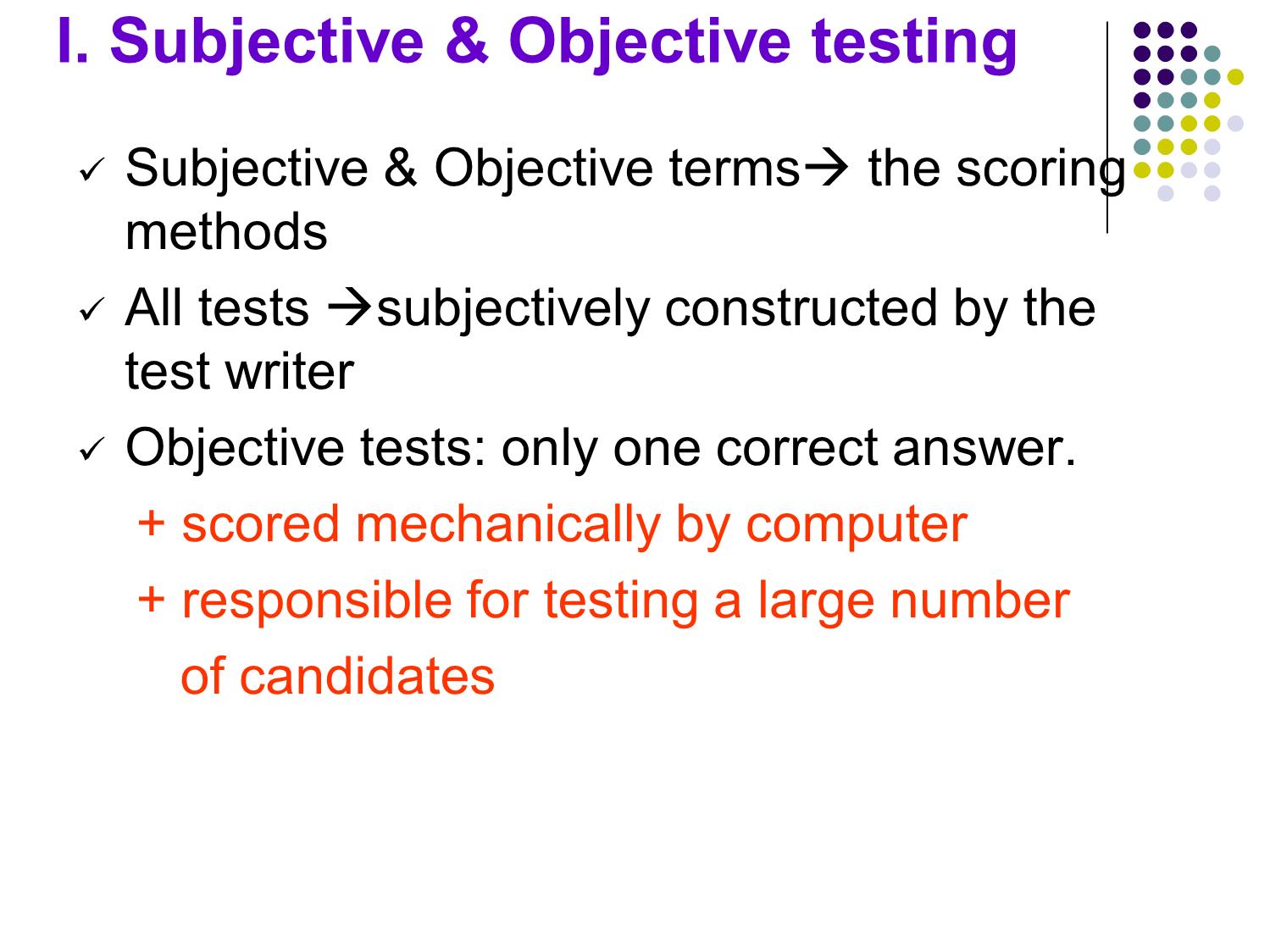
Trang 2
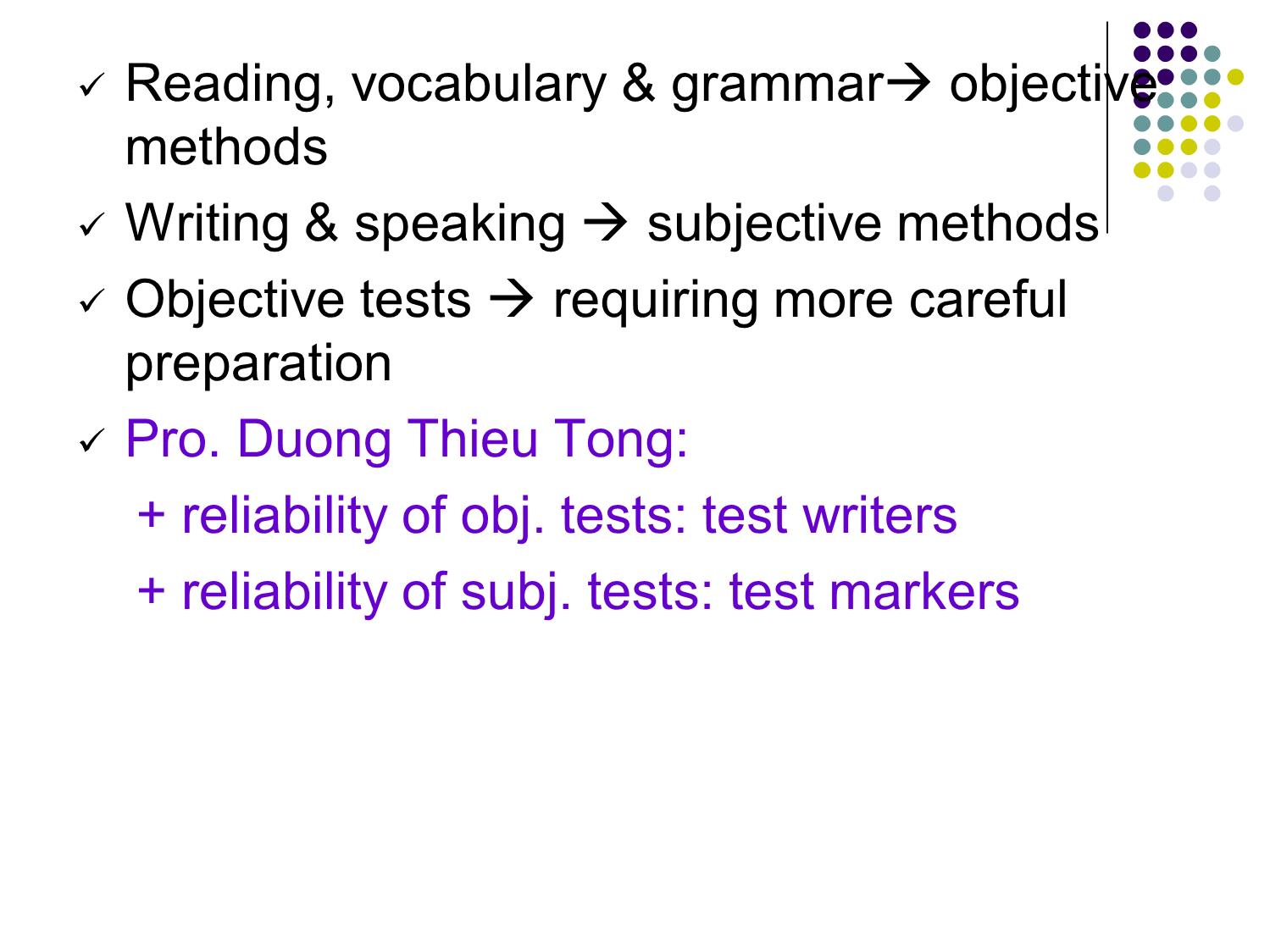
Trang 3
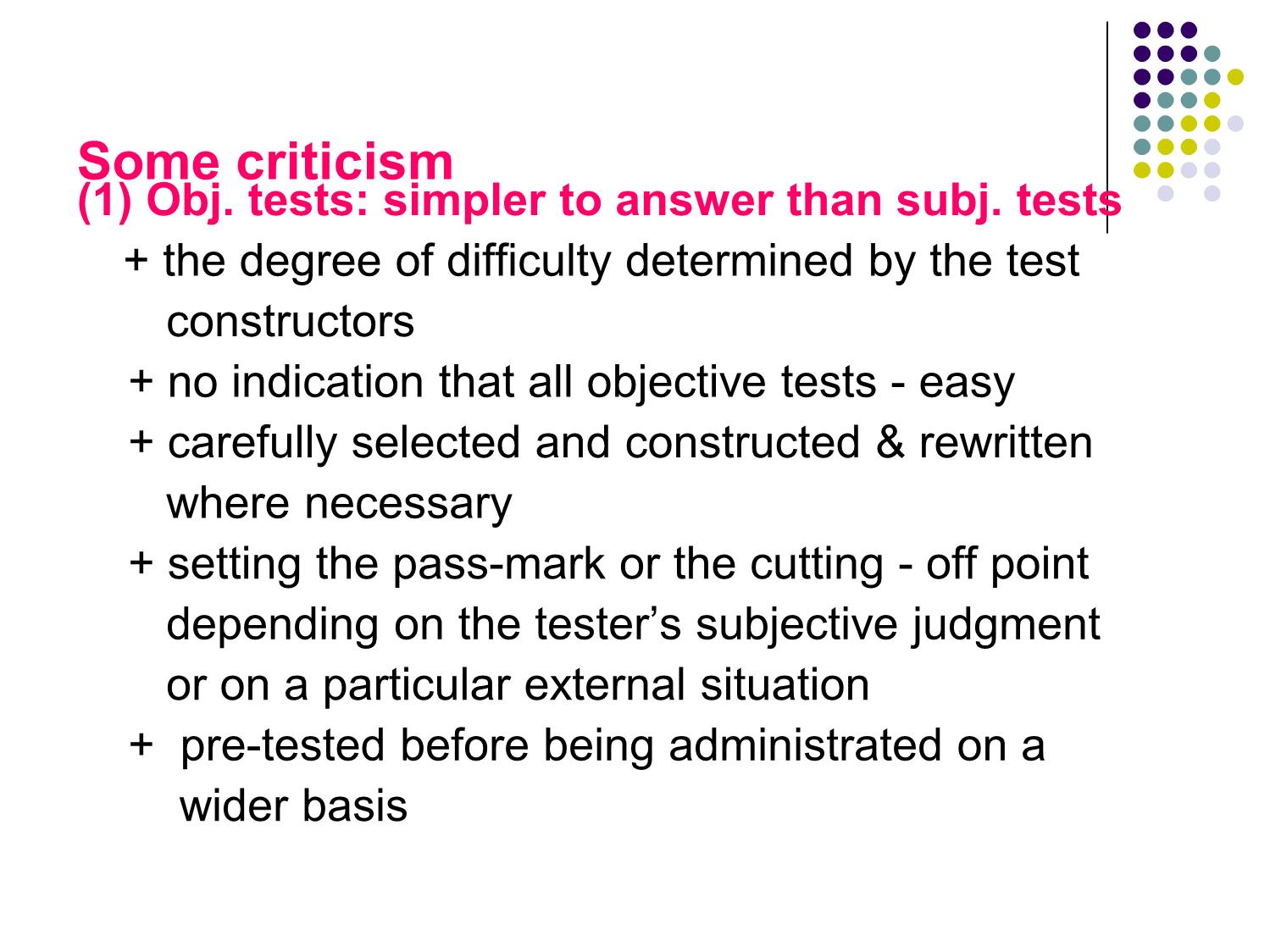
Trang 4
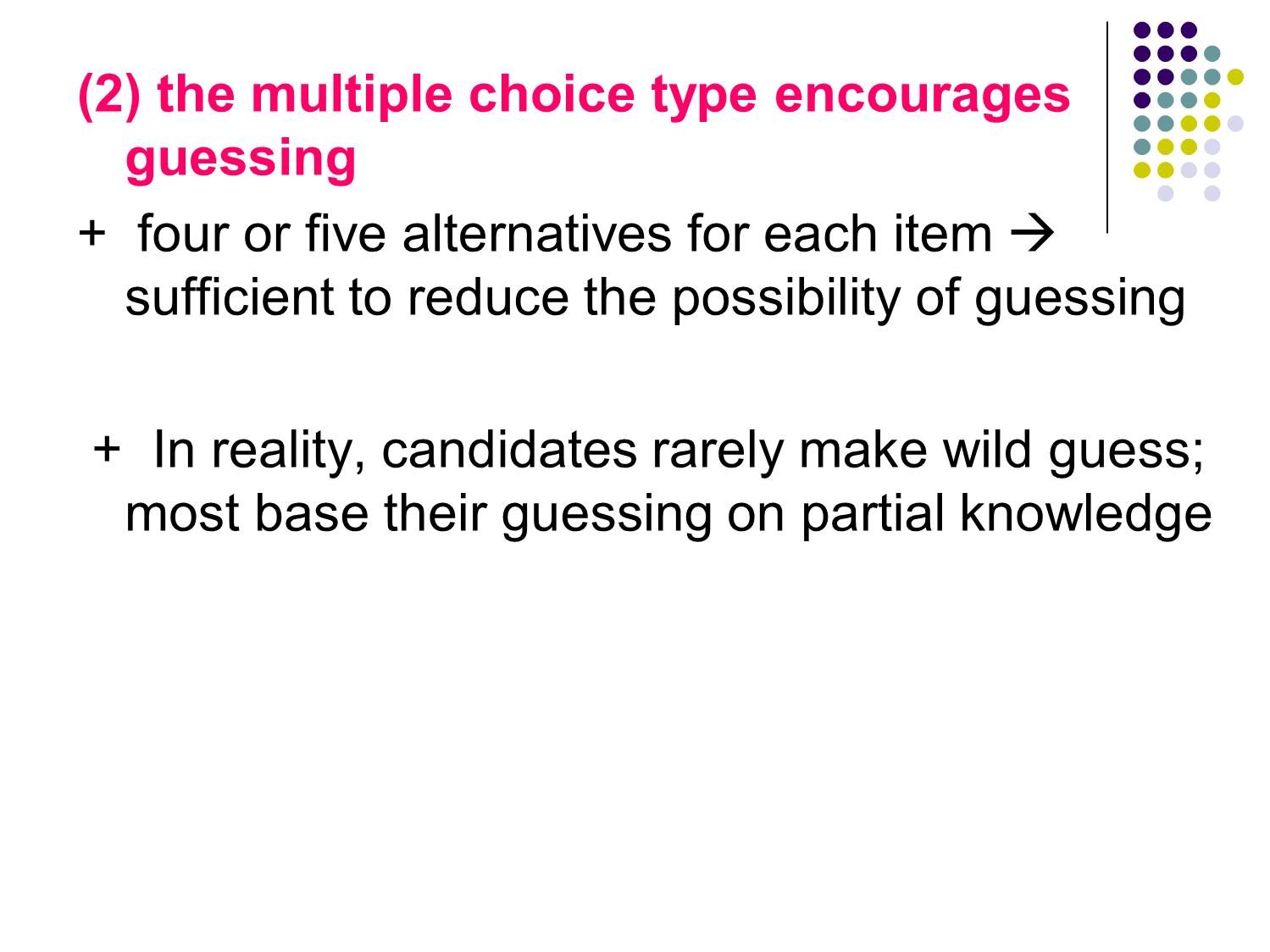
Trang 5
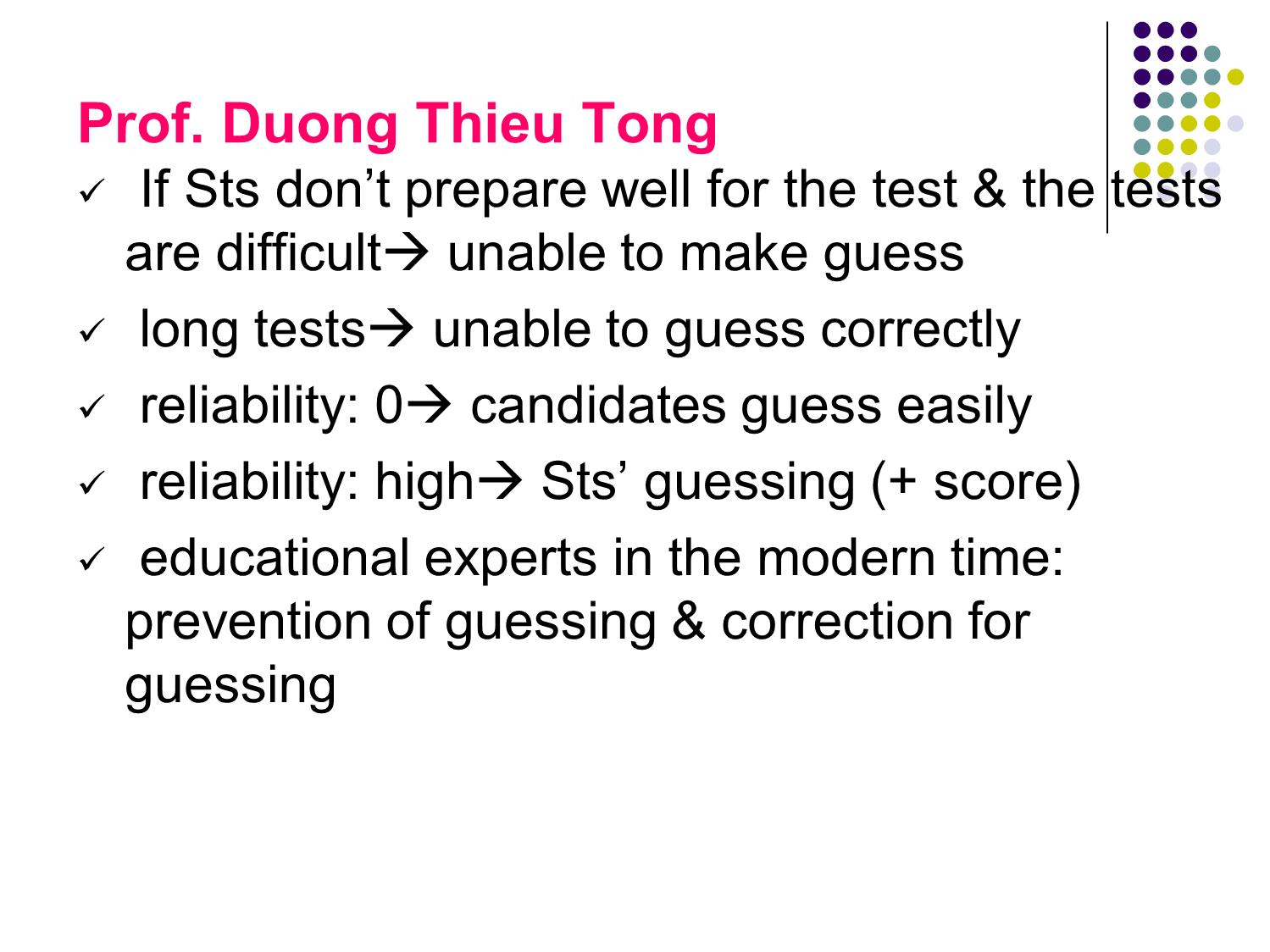
Trang 6
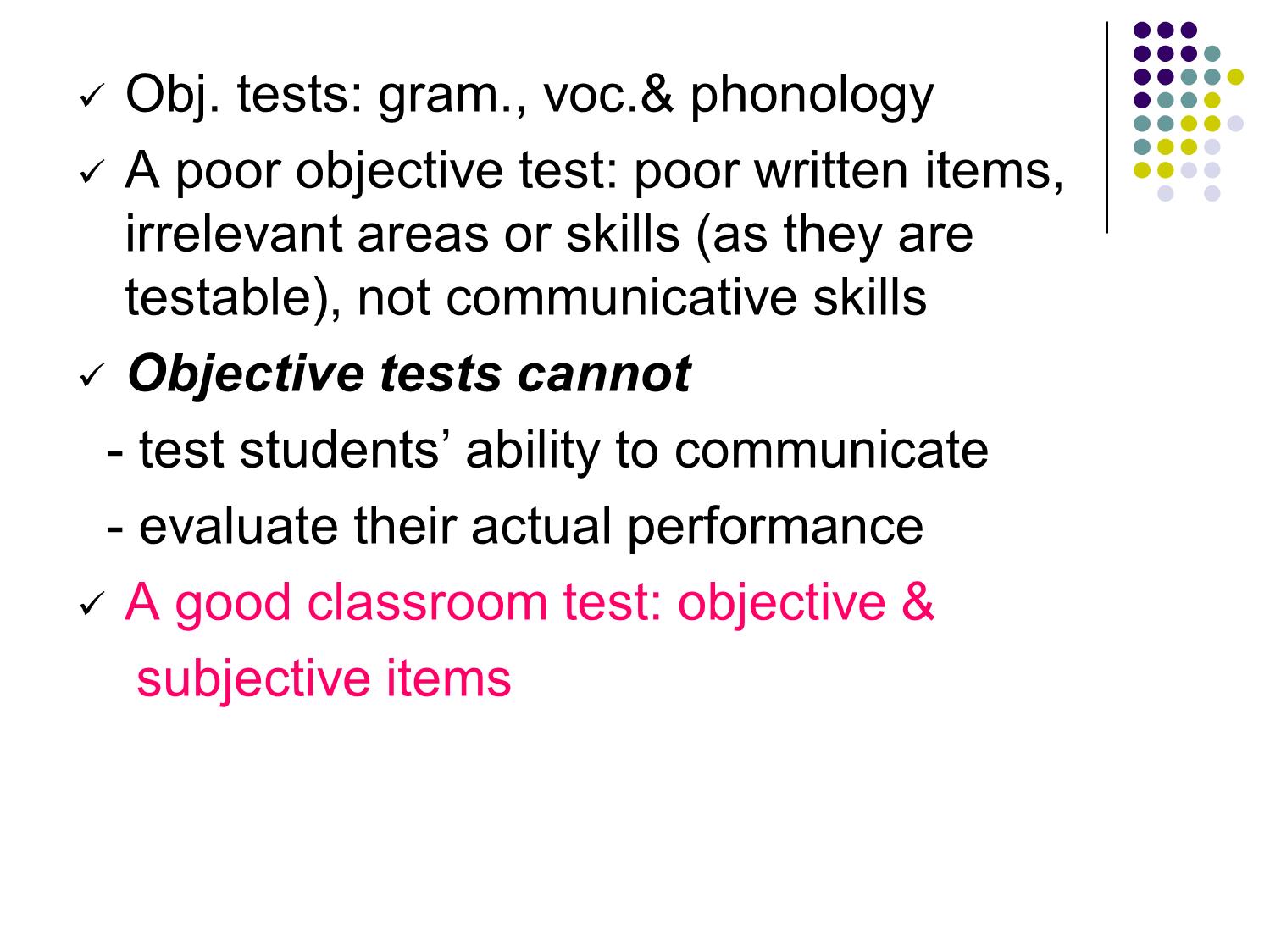
Trang 7

Trang 8
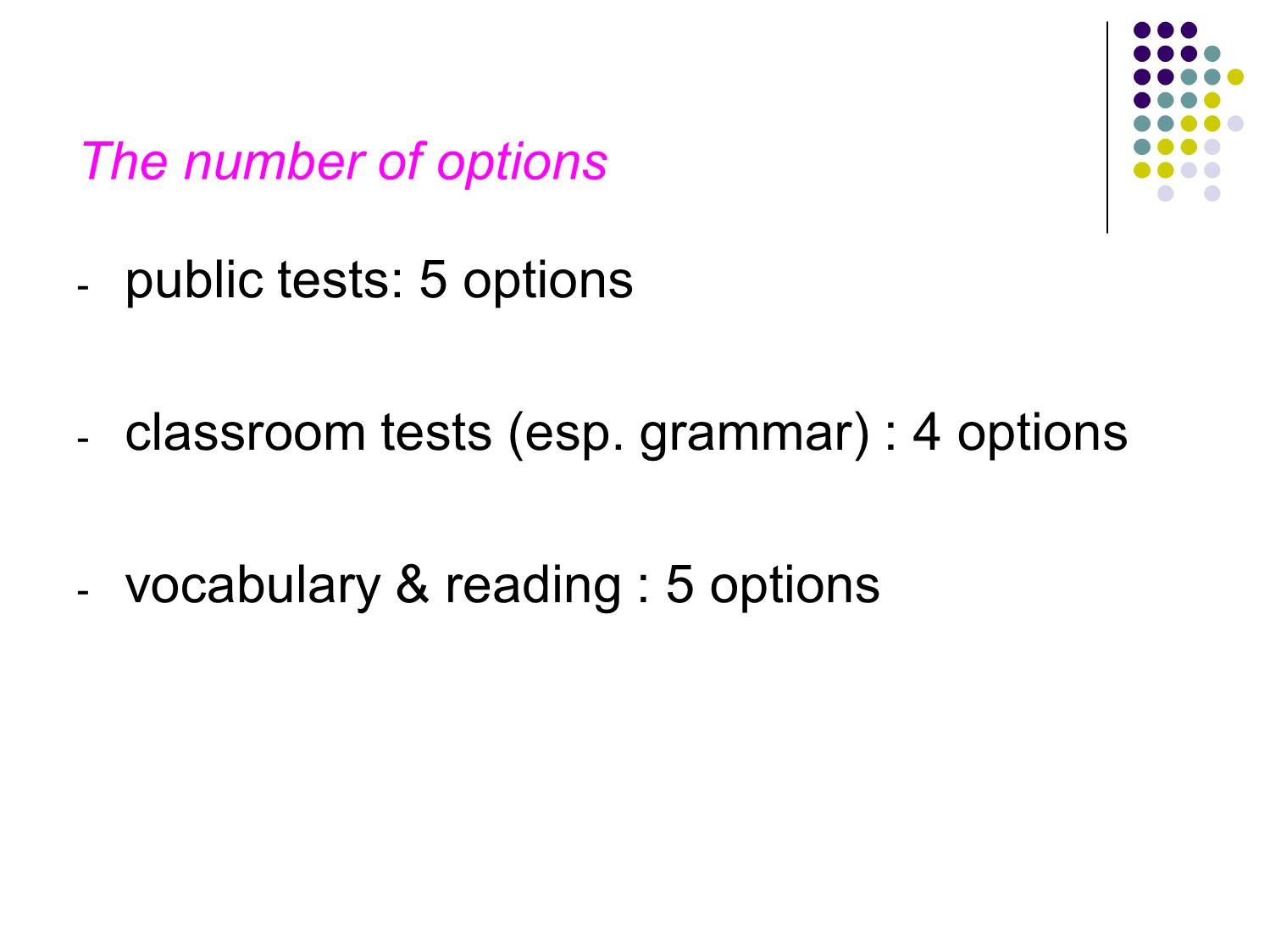
Trang 9
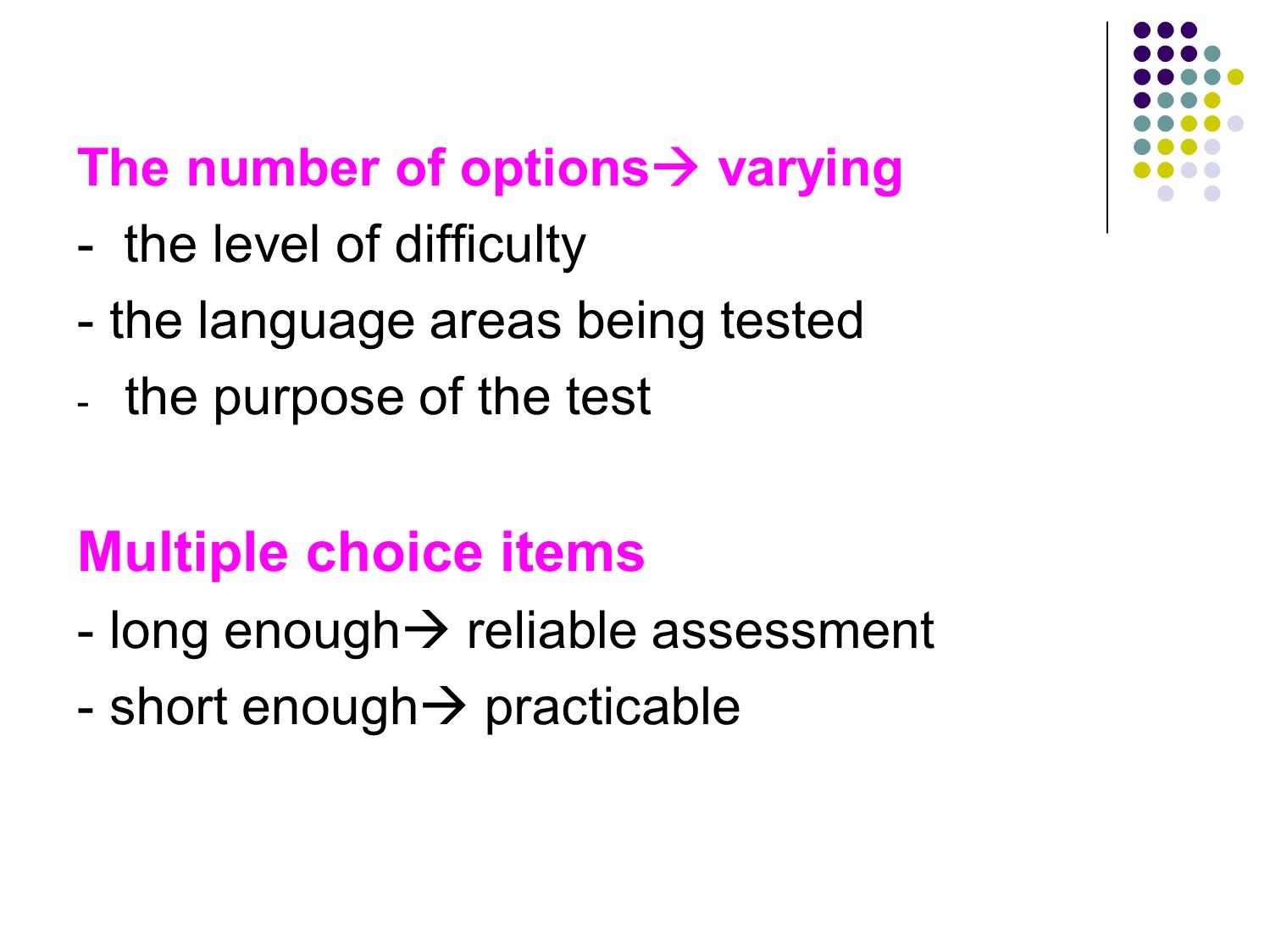
Trang 10
Tải về để xem bản đầy đủ
Bạn đang xem 10 trang mẫu của tài liệu "Bài giảng Phương pháp kiểm tra và đánh giá học tập - Chapter 3: Objective testing", để tải tài liệu gốc về máy hãy click vào nút Download ở trên
Tóm tắt nội dung tài liệu: Bài giảng Phương pháp kiểm tra và đánh giá học tập - Chapter 3: Objective testing
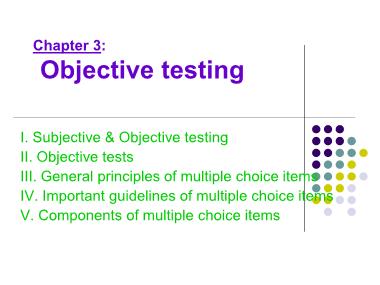
Chapter 3: Objective testing I. Subjective & Objective testing II. Objective tests III. General principles of multiple choice items IV. Important guidelines of multiple choice items V. Components of multiple choice items I. Subjective & Objective testing Subjective & Objective terms the scoring methods All tests subjectively constructed by the test writer Objective tests: only one correct answer. + scored mechanically by computer + responsible for testing a large number of candidates Reading, vocabulary & grammar objective methods Writing & speaking subjective methods Objective tests requiring more careful preparation Pro. Duong Thieu Tong: + reliability of obj. tests: test writers + reliability of subj. tests: test markers Some criticism (1) Obj. tests: simpler to answer than subj. tests + the degree of difficulty determined by the test constructors + no indication that all objective tests - easy + carefully selected and constructed & rewritten where necessary + setting the pass-mark or the cutting - off point depending on the tester’s subjective judgment or on a particular external situation + pre-tested before being administrated on a wider basis (2) the multiple choice type encourages guessing + four or five alternatives for each item sufficient to reduce the possibility of guessing + In reality, candidates rarely make wild guess; most base their guessing on partial knowledge Prof. Duong Thieu Tong If Sts don’t prepare well for the test & the tests are difficult unable to make guess long tests unable to guess correctly reliability: 0 candidates guess easily reliability: high Sts’ guessing (+ score) educational experts in the modern time: prevention of guessing & correction for guessing Obj. tests: gram., voc.& phonology A poor objective test: poor written items, irrelevant areas or skills (as they are testable), not communicative skills Objective tests cannot - test students’ ability to communicate - evaluate their actual performance A good classroom test: objective & subjective items III. General principles of multiple choice items One of the most widely useful types of items The most time-consuming item to construct Not testing language as communication A useful means of teaching & testing various learning situation (esp. gram & vocabulary not ability to use the language) Measuring Sts’ ability to recognize correct grammatical forms helping both T &Ss to identify areas of difficulty The number of options - public tests: 5 options - classroom tests (esp. grammar) : 4 options - vocabulary & reading : 5 options The number of options varying - the level of difficulty - the language areas being tested - the purpose of the test Multiple choice items - long enough reliable assessment - short enough practicable IV. Important guidelines of multiple choice items (1) Each item: only one absolutely correct answer (2) Only one feature at a time: being tested (3) Each option: grammatically correct when placed in the stem. (4) a grammar item not contain other grammatical features as difficult as the area being tested, and a vocabulary item not contain more difficult semantic features in the stem than the area being tested. (5) Items: as brief and as clear as possible (6) Items: arranged in rough order of increasing difficulty V. Components of multiple choice items 1. The stem 2. The correct option 3. The distractors 1. The stem the primary purpose: to present the problem clearly and concisely The forms (i) incomplete sentence, (ii) a complete statement; & (iii) a question. the stem: those words or phrases which would have otherwise to be repeated in each option the stem allowing the number of choices 2. The correct option (a) avoid confusing students by having a different number of correct options for each item (b) the correct option: approximately the same length as the distractors 3. The distractors Each distractor must be: - attractive & plausible - grammatically correct when standing by itself Plausible distractors best based on: (a) mistakes in the students’ own written work; (b) their answers in previous tests; (c) teacher’s experience; & (d) a contrastive analysis between L1 & L2
File đính kèm:
 bai_giang_phuong_phap_kiem_tra_va_danh_gia_hoc_tap_chapter_3.pdf
bai_giang_phuong_phap_kiem_tra_va_danh_gia_hoc_tap_chapter_3.pdf

